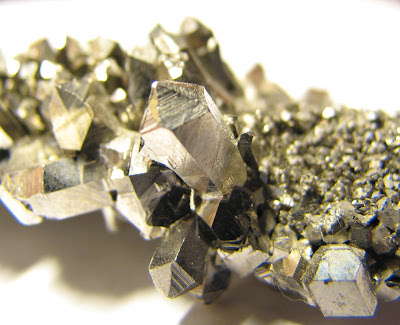Niobium was discovered by Charles Hatchett in 1801.
The chemical symbol for Niobium is Nb and its atomic number is 41.
We find it listed in the periodic table in Group 5 and period 5 and block d.
Niobium belongs to the family of transition metals such as for example the Silver, the Bohrium, cadmium, ...
This element is stable.
Niobium was named after the greek myth Niobe.
Niobium atomic number : Z 41
Group, block group 5, d-block
Period: period 5
Element category: transition metal
Standard atomic weight (±) (Ar): 92.90637(2)[1]
Electron configuration: [Kr] 4d4 5s1
per shell: 2, 8, 18, 12, 1
Niobium Physical properties
Phase: solid
Melting point: 2750 K (2477 °C, 4491 °F)
Boiling point: 5017 K (4744 °C, 8571 °F)
Density near r.t.: 8.57 g/cm3
Heat of fusion: 30 kJ/mol
Heat of vaporization: 689.9 kJ/mol
Molar heat capacity: 24.60 J/(mol·K)
Niobium Atomic properties
Oxidation states! 5, 4, 3, 2, 1, −1, −3 (a mildly acidic oxide)
Electronegativity: Pauling scale: 1.6
Ionization energies 1st: 652.1 kJ/mol
2nd: 1380 kJ/mol
3rd: 2416 kJ/mol
Atomic radius empirical: 146 pm
Covalent radius: 164±6 pm
Niobium Crystal structure: body-centered cubic
Speed of sound thin rod: 3480 m/s (at 20 °C)
Thermal expansion: 7.3 µm/(m·K)
Thermal conductivity: 53.7 W/(m·K)
Electrical resistivity: 152 nΩ·m (at 0 °C)
Magnetic ordering: paramagnetic
Young's modulus: 105 GPa
Shear modulus: 38 GPa
Bulk modulus:170 GPa
Poisson ratio: 0.40
Mohs hardness: 6.0
Vickers hardness: 870–1320 MPa
Brinell hardness: 735–2450 MPa
CAS Number 7440-03-1
